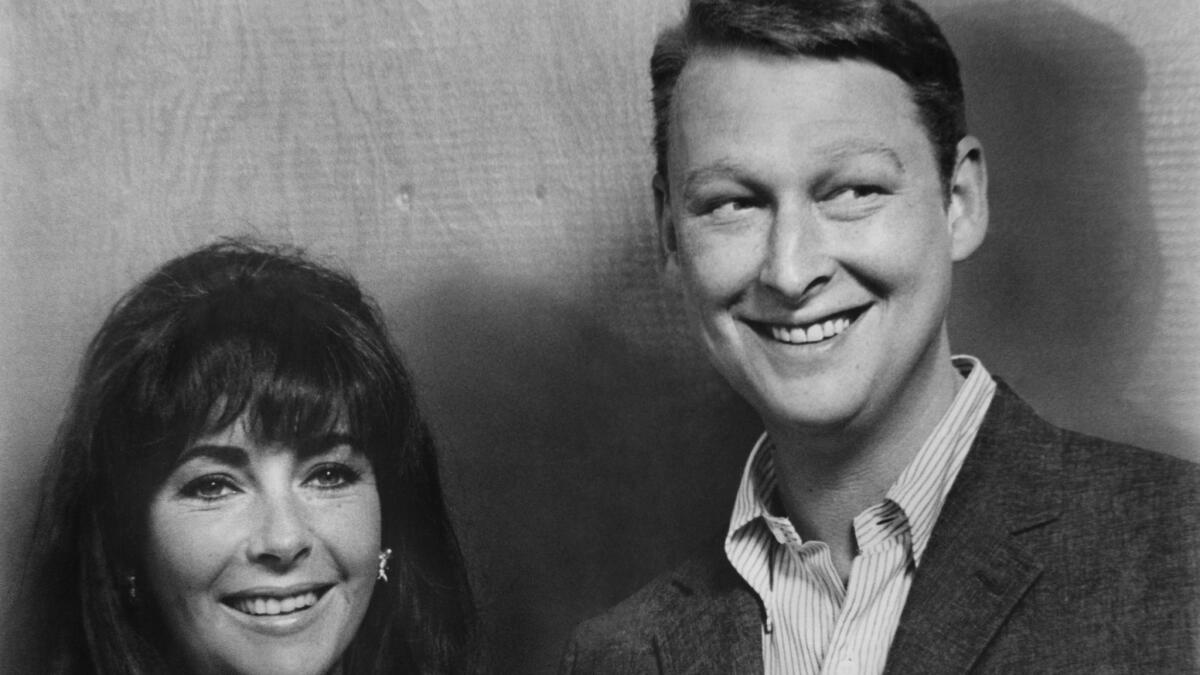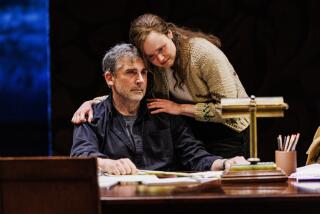Controversy, a first-time director and combustible stars: ‘Who’s Afraid of Virginia Woolf?’ was hardly a sure thing
Fifty years ago last month, a lacerating, dark comedy-drama opened in theaters, helping change the landscape of American cinema. “Who’s Afraid of Virginia Woolf?” – based on Edward Albee’s Tony-winning play – not only captured that landmark American drama’s game-changing interpersonal dynamics, but also marked the film directing debut of Mike Nichols and helped topple the archaic Motion Picture Production Code.
Released on Blu-ray in May by Warner Archives, the 1966 film was no sure thing as it made its way from stage to screen. An emotional horror story, both the play and the film triggered controversy and challenged the status quo.
The play, marking Albee’s Broadway debut, opened Oct. 13, 1962, at the Billy Rose Theatre, was unfolding. The action takes place on a New England college campus in the home of middle-aged history professor George and his fiery wife, Martha, as they “entertain” – devour is more like it – a younger couple into the wee hours of the night.
Critics showered the production with praise, but some mainstream reviewers were shocked by the profanity and sexual shenanigans, stopping short of delivering full raves. John Carter of the New York Daily News described the play as “three and a half hours long, four characters wide, and cesspool deep,” accusing Albee of lacking self-judgment.
Albee’s play burnished its anti-establishment credentials when it was denied a Pulitzer Prize after the awards’ advisory board overruled the drama jury that recommended it, objecting to the play’s profanity and sexual themes. Despite its success, the wordy tragicomedy did not scream out for a film adaptation. The brutal dialogue and controversial tone were unimaginable onscreen in an era when Hollywood productions still largely reflected the idealized vision of the studios’ founders. The Times’ Charles Champlin compared the idea to “making a U-turn on a freeway at night.”
Noted screenwriter Ernest Lehman resisted seeing the Broadway production after reading the script and thinking it was “too much.” However, when Lehman eventually saw the play, he was “shattered.” His agent, Abe Lastfogel, who also represented Albee, suggested Lehman speak to Jack Warner, the last mogul still running a major studio.
Warner Bros. paid $500,000 for the film rights to “Who’s Afraid of Virginia Woolf?” with Lehman adapting and producing. Fred Zinnemann was reportedly in talks to direct. Lehman, who previously received Academy Award nominations for “Sabrina,” “North by Northwest” and “West Side Story,” trimmed more than an hour from Albee’s play, which is set entirely in George and Martha’s living room, and opened it up, re-imagining scenes in the front yard, in a car and at a roadhouse.
Donning a producer’s hat for the first-time, Lehman set out on the not inconsequential task of casting the film. Bette Davis was considered for Martha, with James Mason or Henry Fonda as George. In the first scene of play, Martha utters the line, “What a dump!” and then badgers George to recall which Bette Davis film it’s from. The thought of Davis delivering the line delighted Albee, but in a 1966 interview he admitted that he assumed Hollywood would cast Doris Day and Rock Hudson.
Eventually, Lehman came around to Elizabeth Taylor, who was nearly 20 years younger than Martha and far more glamorous. Although she had won an Oscar in 1961 for “Butterfield 8,” the actress was still more often noted for her beauty and off-screen marriages than her acting chops. “Woolf” offered her a substantial role and Lehman convinced Warner that her $1-million price tag was worth the risk.

During the making of “Cleopatra” in 1963, Taylor had begun an affair with costar Richard Burton. They divorced their respective spouses and married in 1964. There was apprehension over a Taylor-Burton reunion due to the weight of their celebrity, but Burton was eventually cast as George.
Next, encouraged by Taylor and Burton, Lehman made another daring choice, hiring theater director Nichols for his film debut. Coming off four recent Broadway hits, Nichols was in high demand and was already in line to direct “The Public Eye” for Universal and “The Graduate” for Warners. The Burtons convinced producer Lawrence Turman to push back “The Graduate” and allow Nichols to do “Woolf” first. Casting was completed with George Segal tapped to play Nick and Sandy Dennis as Honey.
As Mark Harris wrote in his book “Pictures at a Revolution,” Nichols turned out to be no pushover as a first-time director. He convinced Lehman to restore much of Albee’s profanity to the script and eliminate changes the producer-screenwriter had made that literalized the film. Nichols also had to fight Warner to shoot the film in black-and-white and fired veteran cinematographer Henry Stradling, replacing him with Haskell Wexler.
Production began just after the Fourth of July holiday in 1965. Shooting on the Warner Bros. lot and at Smith College in Northampton, Mass., Nichols pushed Burton and Taylor hard, earned the respect of the crew and alienated Lehman, who then refused to run interference with the studio.
With much of Albee’s salty dialogue intact, the next battle was between Warner and Jack Valenti, the new president of the Motion Picture Assn. of America, over the group’s decades-old Production Code. Warner Bros. preemptively slapped a “For adults only” label on the film, fought Valenti over each use of profanity and eventually won the seal of approval. It would prove to be a major step toward eliminating the code and the implementation of the MPAA’s new ratings system in 1968.
“Who’s Afraid of Virginia Woolf?” premiered at the Pantages Theater in Hollywood on June 21, 1966. It earned immediate critical acclaim even as the press anticipated new controversy as it was released across the continent. It was briefly banned in Nova Scotia, Canada, and a Nashville, Tenn., police sergeant confiscated the film and arrested the theater manager. However, these instances only provided more publicity and helped turn the movie into a huge hit, the second-highest-grossing film of 1966, trailing only “Thunderball.”
In the spring of 1967, “Woolf” was nominated for 13 Academy Awards. Though it lost best picture to another play adaptation, “A Man for All Seasons,” it did win five Oscars, including actress for Taylor; supporting actress for Dennis; and cinematography, black-and-white; costume design, black-and-white; and art direction-set decoration, black-and-white. It was the final year the academy presented awards in separate categories for color and black-and-white films.
More to Read
Only good movies
Get the Indie Focus newsletter, Mark Olsen's weekly guide to the world of cinema.
You may occasionally receive promotional content from the Los Angeles Times.











